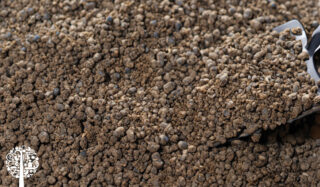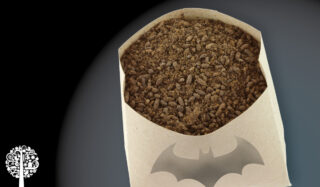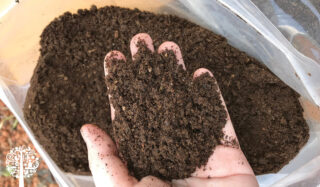The Basics: What is Guano?
Bats live in large colonies, sharing the same cave from generation to generation. As a result, masses of excrement build up within the bat roost cave, eventually breaking down into rich compost. The result is a substance we call guano.
Bat guano is an organic plant superfood that encourages prolific garden growth. Guano is an excellent supplement to any organic grow, indoors or out.
The History of Guano
Guano has a history as one of the most precious fertilizers in the world. It has been a respected fertilizer used by the Incas and older South American cultures for centuries. It was so vital that Incan rulers split the guano-bearing islands among the provinces.
In the early to mid-1800s, guano caused a stir in European and American farmers. A horticultural boom caused worry that the soil might be drained of nutrients irreparably until farmers saw guano’s benefits. From 1840 onwards, Britain imported upwards of two million tonnes of guano, and the administration of the United States made it a case of agricultural need.
“Guano has become so desirable to agricultural interests in the US that the Government must employ all means properly in its power to cause it to be imported into the country at a reasonable price” – US President Millard Fillmore 1850-1853
Guano was so precious to crop development that huge battles were fought over guano mines for centuries. In the 19th century, guano caused mass hysteria similar to the California gold rush. Over 40 years, Peru shipped over 20 million tonnes of guano worldwide, making over $2 billion in profit.
How Does Species Affect Guano?
The diet of various bat species can change the nutrient profile of the guano. For example, bats that eat insects produce guano with a higher nitrogen content, creating an excellent fertilizer for the vegetative stage. In contrast, fruit-eating bat varieties have guano with a higher phosphorus content, which is more valuable during the flowering stage.
What About Sustainability?
Bat guano mining can affect the biodiversity of the bat’s roost cave environment. Naturally, the guano sustains many cave-dwelling invertebrate species, which depend on it for survival. However, the most consequential damage is to the bat colonies themselves. Bats are very susceptible to any disturbance of their roosts. Analysis has indicated that bat guano mining is linked to the loss of specific bat species and associated invertebrates and fungi. Therefore, collecting guano in some regions is outlawed.

Unfortunately, this can sometimes lead to illegal harvesting in challenging circumstances. People will collect from remote spots, sometimes in dangerous landscapes. Miners also face health risks of repetitive exposure to bat feces without adequate safety equipment, which can cause severe respiratory problems.
Some have turned their backs on guano based on these sustainability and exploitation issues. However, some reputable companies offer organic guano fertilizer with ethics and sustainability in mind. In areas where harvesting is legal, guano collection is often government-controlled and monitored to ensure the ecosystem is not disturbed. Miners safely scoop the guano up without destroying the caves and the habitat of the bats.
The Nutritional Value of Guano
Guano is rich in nitrogen, phosphorus, and potassium (NPK), essential for plant growth. It also contains several micronutrients, including boron (B), calcium (Ca), iron (Fe), manganese (Mn), sulfur (S), zinc (Zn), and magnesium (Mg).
The Many Benefits of Guano
Guano works well in both indoor and outdoor grows. It improves soil texture by binding the soil and increasing water retention if it is too loose. In contrast, it can also loosen the earth and allow water to penetrate if it is too dense.
Guano is great for bioremediation; it helps flush toxins from the soil while protecting the roots and feeding the plant. In addition, it encourages the breakdown of other organic materials as a slow-release fertilizer, delivering nutrients to the garden long-term and adding beneficial enzymes and microflora for continued soil health. Bat guano contains varying levels of NPK. Combine them with other organic products to create individual macronutrient ratios.

Guano acts as a pH adjuster, buffering the pH of the root system and helping to control nematodes. In addition, it acts as a natural fungicide against chitin from insect shells and as a soil conditioner. Combine it with other organic additions, like worm castings and bone meal, to build prosperous colonies of root fauna. Finally, it offers fungal protection when used as a diluted foliar spray.
How To Use Bat Guano
Guano is the perfect foundation for any soil recipe; it will not burn your plants, and the crops you grow will be more flavourful and invulnerable to disease.
Water guano straight into your grow media. Use one tablespoon of guano per liter of warm (not hot) water. Stir together and leave to rest overnight, then apply to the garden once a week.
You can also add guano directly as a soil amendment to boost plant performance. Dig it into the earth and water well to activate it. If you sprinkle it on the surface, it will dry out, clump up, and be ineffective.
To make a nutritionally-rich compost tea:
- Add one teaspoon of blackstrap molasses, five tablespoons of bat guano, and 65g of fully finished compost to a 5-litre bucket of non-chlorinated water, complete with an air stone.
- Stir thoroughly and leave to aerate for 48 hours so aerobic beneficial microbes can populate the sugars of this nutrient-rich solution.
- Dilute 1 part compost tea to 10 parts water and apply a foliar spray or soil drench.
As bat guano is a rich and natural organic matter, the microbes in the soil must break it down into a soluble form for the plant roots to take up. This process typically takes around two weeks, so you shouldn’t expect to see results instantly.
Bat Guano – The Dangers
While bat guano is a true wonder regarding soil and plant health, you should be mindful that bats carry infectious diseases. In the current post-COVID environment, people are more cautious than ever.
Bat guano can damage your lungs and cause diseases like histoplasmosis. Symptoms include fever, cough, and fatigue. Many people get better without medication. However, those with weakened immune systems can experience a more severe infection.

Working with bat droppings requires the use of a HEPA filter mask. Attempting to work in an area where bat droppings are present may release spores into the air. Without the proper protection, this could lead to severe health consequences. Also, wearing a mask when handling or mixing bat guano into water is essential. Always clean surfaces and equipment after use and wash your hands.
Finally, leaving bat guano preparations to sit will cause harmful bacteria to develop, so use it immediately. Temperature can also have a negative effect, so keep your powdered product out of sunlight and off cold floors. Of course, you should also keep guano out of the reach of children.
Final Word
Bat guano is an excellent organic fertilizer that has been used for thousands of years, so if you want to see great results from your plants, you should try it!
